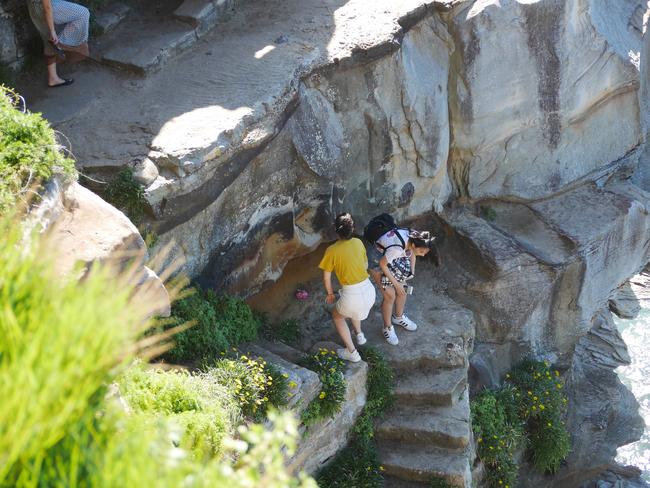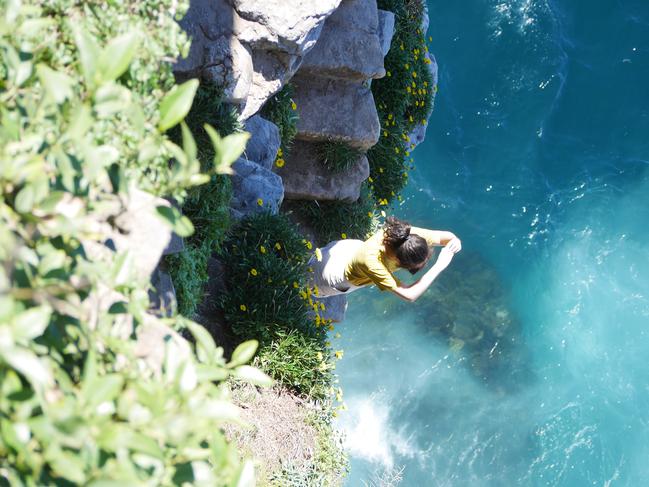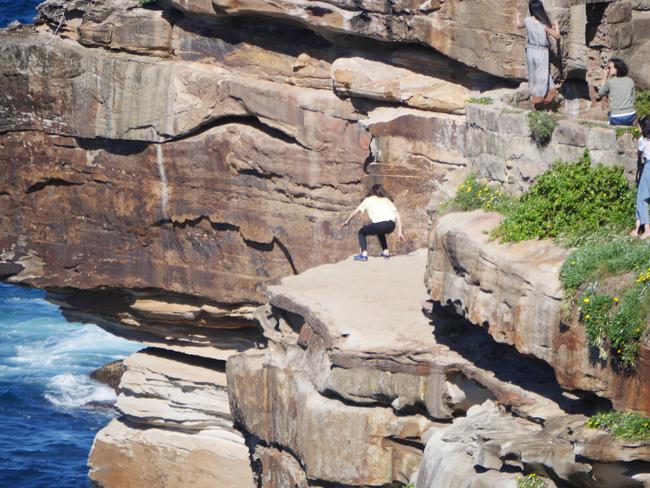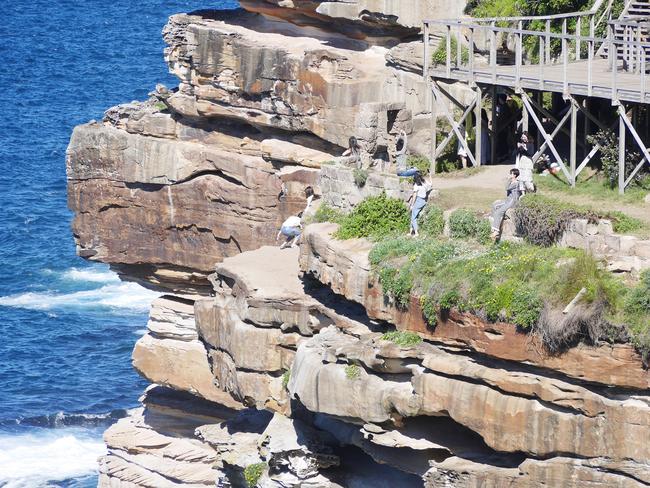Tourists risk death for selfies, leave human waste behind at Diamond Bay Reserve
Residents in the exclusive eastern Sydney suburb of Vaucluse are outraged after an influx of tourists risking their lives for a selfie have been openly urinating and defecating in the affluent enclave. See the pictures and video.
Wentworth Courier
Don't miss out on the headlines from Wentworth Courier. Followed categories will be added to My News.
Tourists are risking their lives posing for pictures on a picturesque Sydney cliff face in a dangerous trend locals warn will end in tragedy.
Hundreds of people have been flocking to Diamond Bay Reserve at Vaucluse to take death-defying selfies since the Easter weekend.
The Wentworth Courier has been sent dozens of pictures taken in the past week showing people on the cliff edge, only a few centimetres and a misstep away from a plunge into the water.

Michael Hyams, who lives nearby, said a picture posted on social media had apparently inspired copycat risk-taking among tourists seeking Instagram likes.
“It is only a matter of time until there is a fatality … I do not want to see people die because of stupidity,” Mr Hyams said.
Diamond Bay is the latest scenic coastal spot in NSW to morph into a magnet for thrillseekers.
Wedding Cake Rock in the Royal National Park south of Sydney has long been popular for risky selfies. In 2014 a French student fell to his death when a sandstone cliff crumbled beneath him. A year later two men had to be rescued after slipping and falling onto a ledge.

In response the National Parks and Wildlife Service fenced off the area and introduced fines of up to $3,300 for anybody caught climbing on the rocky outcrop.
Figure Eight Pools, another spot in the national park popular with Instagrammers, is also extremely dangerous because of the risk of being swept off the rocks by big waves. A man drowned there in February.
Mr Hyams said a lack of amenities and infrastructure at Diamond Bay has also led to tourists urinating and defecating in public spaces around the reserve. Residents last week stopped a man from defecating in his street in the middle of the day.

“It is something we have never really seen before because there are no toilets and there is rubbish overflowing,” Mr Hyams said. “We have a tourist attraction out of nowhere so the infrastructure isn’t there yet.”
He emphasised while tourists were welcome to the area by him and other residents, they had to respect the fragile ecosystem.
Another resident Lisa Rosenthal, who regularly walks her dogs at the reserve, also expressed concerns.
“Last week I picked up wet tissues that had been used as toilet paper in the park … a few of us have rung council rangers about people jumping over the fence and climbing on the arch which poses (potential for a) fatality.”

Waverley mayor John Wakefield said he “shares the community’s frustration at visitors who risk their lives at out coastal reserves”.
“No selfie is worth dying for or risking the lives of rescuers,” he said.
The mayor said the council was upgrading signage across all parks and reserves.
“The new signs communicate information such as the dangers of the cliffs in both text and universally recognisable icons, where applicable.
“We are also upgrading fencing in our coastal parks and reserves. The new design … is better suited to the current barriers installed as it is harder to climb, and more durable.”
New South Wales Police were contacted for comment, though referred the matter back to the local council.
